Tech Giants’ Race to Build the Most Powerful AI Supercomputer
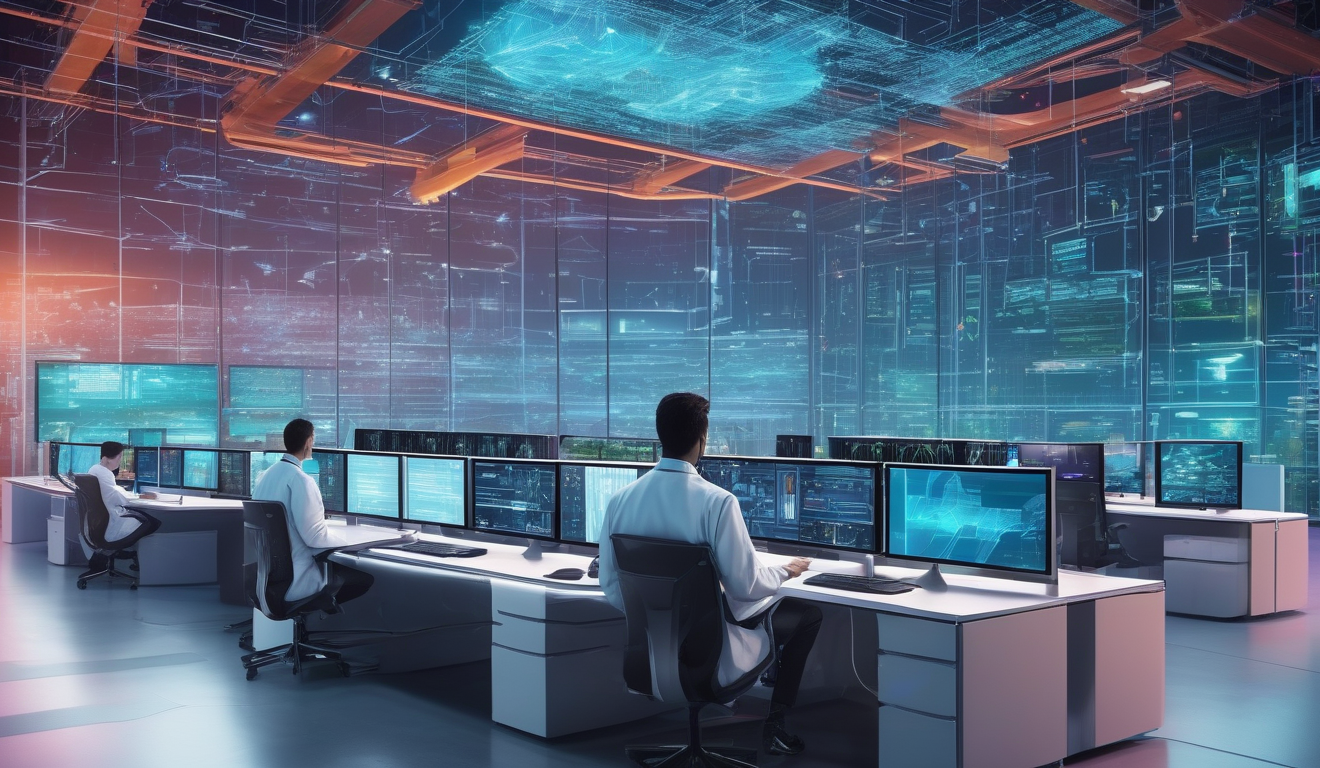
The race to build the most powerful AI supercomputer is heating up, and it’s a thrilling spectacle to watch! Major tech companies are not just competing; they are transforming the landscape of artificial intelligence as we know it. Imagine a world where machines can analyze data faster than the blink of an eye, making decisions that can change entire industries. This isn’t just a dream anymore; it’s becoming a reality thanks to the relentless pursuit of innovation by these tech giants.
At the heart of this competition are AI supercomputers, which are specialized systems designed to perform complex calculations at lightning speeds. These machines have become the backbone of AI research, pushing the boundaries of what we thought was possible. They are engineered to tackle vast amounts of data, enabling breakthroughs in fields like healthcare, climate modeling, and autonomous vehicles.
But who are the key players in this exhilarating race? Companies like Google, Microsoft, and NVIDIA are leading the charge, each with their own unique strategies and innovations. For instance, Google is diving into quantum computing, which could potentially revolutionize the speed and efficiency of AI systems. Meanwhile, Microsoft is leveraging its Azure platform to create robust AI infrastructures that support a wide range of applications.
NVIDIA, on the other hand, is changing the game with its powerful graphics processing units (GPUs). These GPUs are designed to handle the demanding workloads of AI tasks, making them a critical component in supercomputing. The debate over the superiority of GPUs versus traditional CPUs is ongoing, but one thing is clear: GPUs are becoming indispensable in the realm of AI.
As we look to the future, the implications of these advancements are staggering. We can expect to see emerging trends that will not only shape the technology landscape but also influence how we interact with AI daily. The innovations being developed today will pave the way for a new era of supercomputing, where AI will become even more integrated into our lives.
In conclusion, the race among tech giants to build the most powerful AI supercomputer is not just about competition; it’s about shaping the future of technology. As these companies continue to push the envelope, we can only imagine the incredible possibilities that lie ahead.
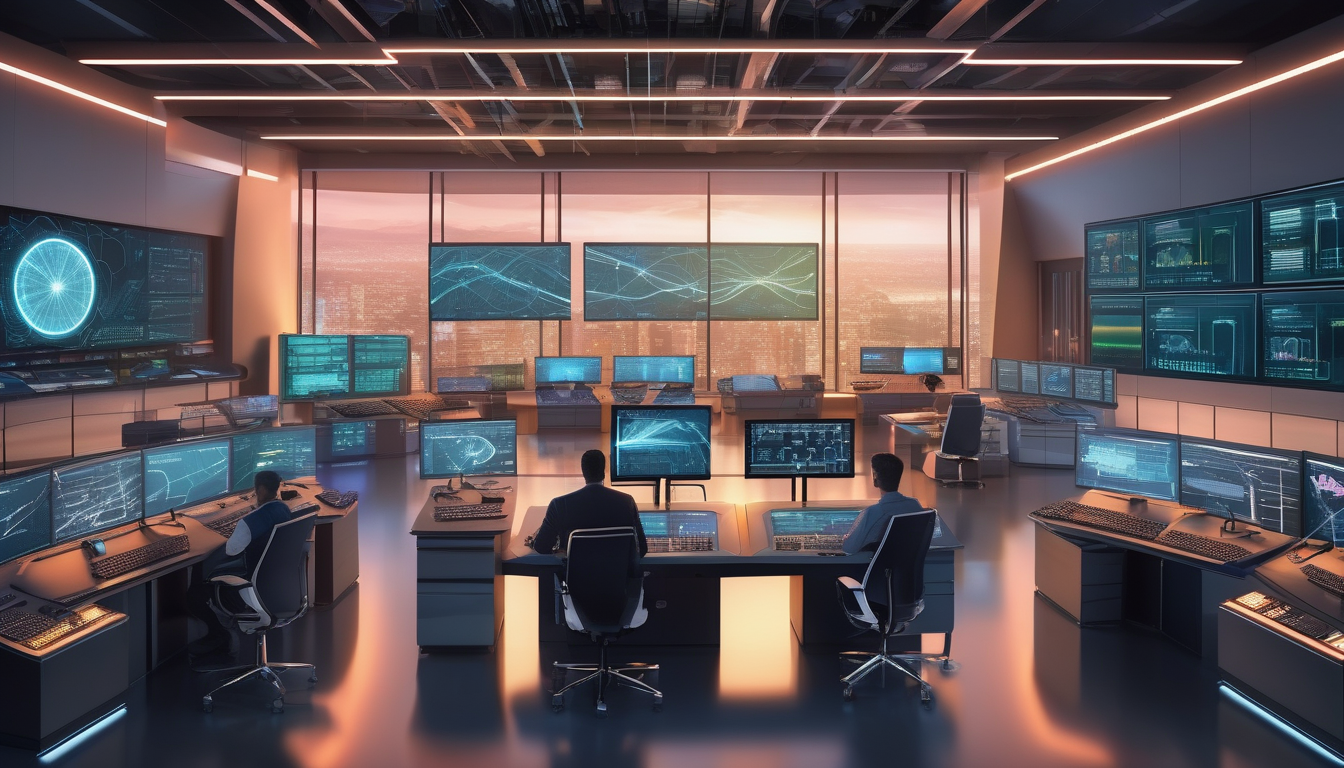
Overview of AI Supercomputers
AI supercomputers are the titans of the tech world, engineered to tackle the most complex calculations at lightning-fast speeds. Imagine a brain that can process data faster than you can blink—this is the essence of AI supercomputing. These powerful machines are not just about raw power; they are intricately designed with specialized architectures that allow them to excel at tasks like machine learning, natural language processing, and even real-time data analysis.
At the core of these supercomputers lies a unique combination of hardware and software that sets them apart from traditional computing systems. Most notably, they utilize advanced parallel processing techniques, enabling them to perform millions of calculations simultaneously. This parallelism is akin to having a massive team of experts working on a problem all at once, rather than a single individual tackling it step by step. The result? Unprecedented efficiency and speed.
One of the key roles of AI supercomputers is their contribution to advancing AI research. They are the backbone of groundbreaking discoveries in various fields, including healthcare, climate modeling, and autonomous systems. For instance, researchers can simulate complex biological processes or predict climate changes with remarkable accuracy, thanks to the immense computational power these supercomputers provide.
Moreover, the architecture of AI supercomputers is constantly evolving. The inclusion of specialized components such as Graphics Processing Units (GPUs) has revolutionized the way these systems operate. Unlike traditional Central Processing Units (CPUs), GPUs are designed to handle multiple tasks simultaneously, making them ideal for the parallel processing required in AI applications. This shift has led to significant improvements in performance and efficiency.
In summary, AI supercomputers are not just powerful machines; they represent a leap forward in our ability to harness technology for complex problem-solving. As we continue to push the boundaries of what AI can achieve, these supercomputers will play a pivotal role in shaping the future of artificial intelligence and its applications across various industries.
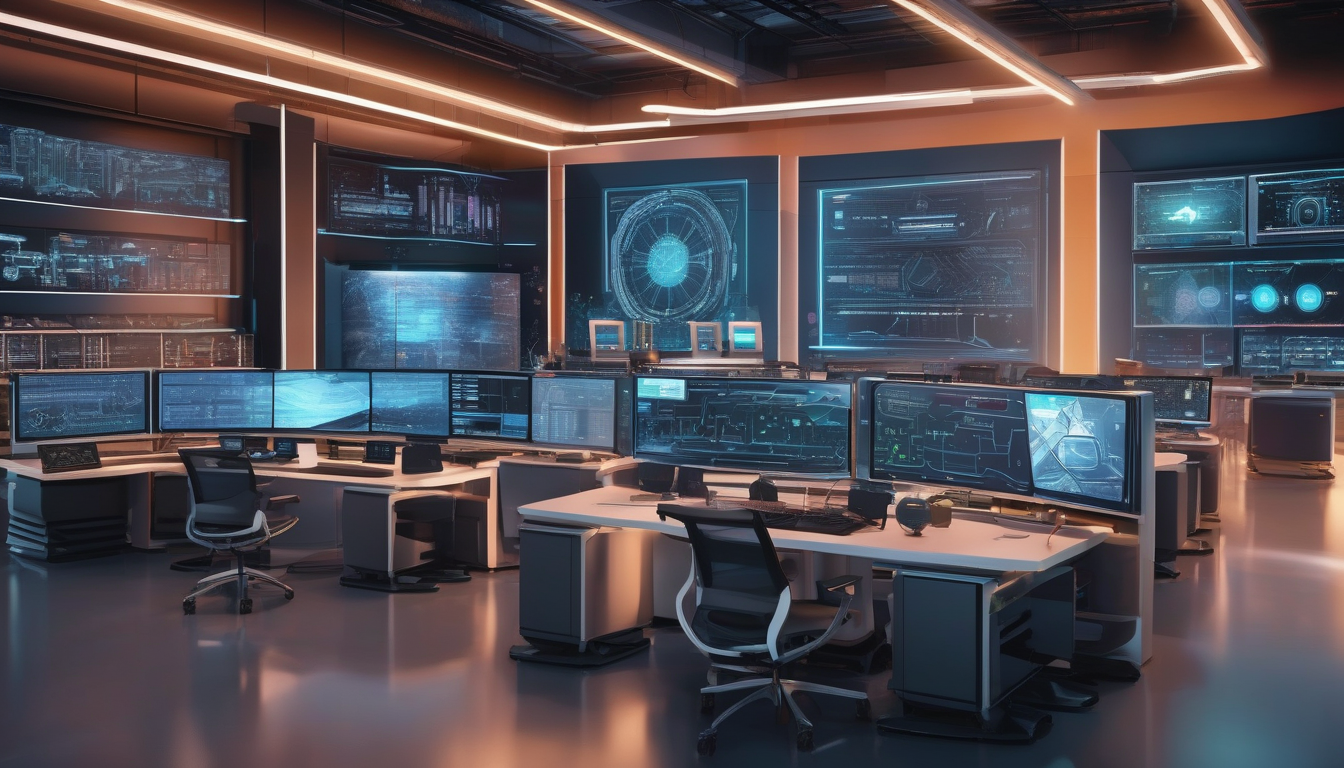
Key Players in the Race
The race to build the most powerful AI supercomputers is heating up, with major tech companies like Google, Microsoft, and NVIDIA leading the charge. Each of these giants brings unique strengths and strategies to the table, and their competition is not just about speed—it’s about redefining the future of artificial intelligence.
Google, for instance, is taking a bold step forward by investing heavily in quantum computing. This innovative approach could potentially unlock new dimensions of AI capabilities that traditional computing methods simply can’t match. Their focus on quantum technology isn’t just a side project; it’s a core pillar of their strategy to enhance AI performance and efficiency.
On the other hand, Microsoft is leveraging its robust Azure cloud platform to create a formidable AI supercomputing infrastructure. By integrating powerful computing resources with advanced AI tools, Microsoft is enabling developers and researchers to push the boundaries of what AI can achieve. Their cloud services are designed to be flexible and scalable, supporting a wide range of AI applications from machine learning to natural language processing.
NVIDIA, known for its cutting-edge graphics processing units (GPUs), is also making significant strides in AI supercomputing. The company has transformed the way AI workloads are handled, making GPUs the go-to choice for training complex models. This shift is critical because GPUs can process multiple tasks simultaneously, making them far more efficient for AI applications compared to traditional CPUs. The debate surrounding GPUs vs. CPUs is ongoing, but the advantages of GPUs in handling massive datasets and parallel processing are clear.
As these tech titans innovate and compete, the implications for the future of AI are profound. The advancements made in AI supercomputing will not only enhance the capabilities of AI systems but will also influence various industries, from healthcare to finance. The race is not just about who can build the fastest machine; it’s about who can harness the power of these technologies to solve real-world problems and drive societal change.
Google’s Quantum Leap
In the ever-evolving landscape of artificial intelligence, Google is making waves with its groundbreaking advancements in quantum computing. This innovative technology is not just a buzzword; it represents a significant shift in how we approach complex problem-solving. Imagine having the power to perform calculations that would take traditional computers eons to solve, all in mere seconds. That’s the promise of quantum computing, and Google is at the forefront of this revolution.
One of the most exciting aspects of Google’s quantum leap is its potential to enhance AI capabilities. By leveraging quantum processors, Google aims to tackle problems that are currently unsolvable with classical computing methods. This includes everything from optimizing logistics and supply chains to developing new materials and drugs. The implications for industries are staggering, and the race is on to harness this power effectively.
At the heart of Google’s strategy are its dedicated research initiatives, which focus on creating algorithms that can operate efficiently on quantum systems. These algorithms are designed to exploit the unique properties of quantum bits, or qubits, allowing for parallel processing on an unprecedented scale. For instance, Google’s Sycamore processor has already demonstrated its ability to perform specific tasks faster than the most advanced supercomputers available today.
Moreover, strategic partnerships play a crucial role in Google’s quest for quantum supremacy. Collaborations with leading universities and research institutions are paving the way for innovative breakthroughs. These partnerships not only provide access to cutting-edge research but also foster a community of experts dedicated to pushing the boundaries of what’s possible in AI and quantum computing.
In summary, Google’s commitment to quantum computing is not just about keeping up with competitors; it’s about redefining the future of technology. As they continue to innovate and collaborate, we can expect to see AI supercomputing reach new heights, unlocking capabilities that were once thought to be the stuff of science fiction. The implications of this quantum leap are profound, and they could very well shape the trajectory of artificial intelligence for years to come.
Innovations in AI Algorithms
In the fast-paced world of artificial intelligence, algorithmic innovation is the heartbeat that drives advancements. Google, in particular, has made significant strides in developing algorithms that not only enhance the efficiency of AI supercomputers but also expand their capabilities. These innovations are akin to giving a high-performance sports car a turbo boost, enabling it to reach new speeds and heights.
One of the standout breakthroughs is the development of transformer models, which have revolutionized natural language processing. Unlike traditional models that processed data sequentially, transformers can analyze and generate language in a parallel manner, drastically reducing computation time. This is crucial for AI supercomputers, which need to handle massive datasets swiftly. Imagine trying to read an entire library; a transformer allows the AI to digest information at lightning speed, making it a game-changer in how machines understand human language.
Moreover, Google has been exploring reinforcement learning techniques that empower AI systems to learn from their environment through trial and error. This approach mimics how humans learn new skills, making AI more adaptable and efficient. For instance, in training AI to play complex games like chess or Go, reinforcement learning allows the system to evaluate countless strategies and outcomes, ultimately honing its performance. The implications of this are vast, as it opens doors for AI to tackle real-world problems, from optimizing logistics to enhancing healthcare solutions.
To support these innovations, Google has also focused on scalable architecture that allows algorithms to run seamlessly across multiple processors. This architecture is essential for supercomputing environments where the demand for processing power is immense. With the right infrastructure, AI algorithms can be deployed more effectively, leading to faster and more accurate results. In essence, it’s like upgrading from a single-lane road to a multi-lane highway, allowing data to flow freely and efficiently.
In summary, the innovations in AI algorithms are not just technical enhancements; they are the foundation upon which the future of AI supercomputing is built. As Google continues to push the envelope, we can expect these advancements to pave the way for groundbreaking applications that will redefine our interaction with technology.
Partnerships and Collaborations
In the rapidly evolving world of AI supercomputing, strategic partnerships play a pivotal role in driving innovation and enhancing capabilities. Google, for instance, has recognized that collaboration is key to unlocking the full potential of its supercomputing ambitions. By forging alliances with leading universities and cutting-edge research institutions, Google aims to leverage diverse expertise and resources that can propel its AI initiatives forward.
These collaborations are not just about pooling resources; they also foster an environment of innovation. For example, Google has partnered with institutions like Stanford University and MIT, creating a symbiotic relationship where academic research meets industry needs. This synergy allows for the development of groundbreaking algorithms and technologies that can be integrated into Google’s AI supercomputers, enhancing their performance and efficiency.
Moreover, these partnerships often involve joint research projects, where both parties contribute their unique strengths. Google brings its advanced computing infrastructure, while academic partners provide theoretical insights and experimental data. This combination can lead to significant breakthroughs in AI capabilities. For instance, collaborative research has led to improvements in machine learning techniques, making algorithms faster and more accurate.
Another critical aspect of these partnerships is access to data. In the world of AI, data is king, and partnerships can facilitate the sharing of vast datasets that are crucial for training AI models. By collaborating with research institutions that have access to unique datasets, Google can enhance the learning capabilities of its supercomputers, ensuring they are equipped to tackle complex real-world problems.
In conclusion, Google’s approach to partnerships and collaborations is not just a strategy; it’s a cornerstone of its AI supercomputing efforts. By working hand-in-hand with academic leaders and research institutions, Google is positioning itself at the forefront of AI innovation, ensuring that it remains competitive in the race for the most powerful AI supercomputer.
Microsoft’s Azure AI Supercomputing
In the ever-evolving landscape of artificial intelligence, stands out as a formidable player, leveraging the power of its cloud platform to push the boundaries of what’s possible. With a commitment to innovation, Microsoft has developed a robust infrastructure that supports high-performance computing tailored specifically for AI workloads. This means that researchers and developers can access the computational power they need without the hefty price tag of maintaining physical supercomputers.
One of the key features of Azure’s supercomputing capabilities is its scalability. Users can easily scale their computing resources up or down based on their project requirements. This flexibility is crucial in AI development, where the demand for processing power can fluctuate dramatically. Imagine trying to solve a complex puzzle; sometimes you need a few pieces, and other times you need the entire box. Azure allows you to tailor your resources to fit your needs perfectly.
Moreover, Microsoft has integrated various AI tools and frameworks into Azure, making it easier for developers to build and deploy AI models. For instance, Azure Machine Learning provides a comprehensive suite of tools that streamline the development process, from data preparation to model training and deployment. This ecosystem not only enhances productivity but also fosters collaboration among teams working on AI projects.
Additionally, Microsoft is making strides in ethical AI development. With initiatives focused on responsible AI practices, the company is ensuring that its supercomputing resources are used to create solutions that are not only powerful but also ethical and fair. This approach is increasingly important as AI continues to permeate various aspects of society, raising questions about bias and accountability.
To further illustrate the impact of Azure AI supercomputing, consider the following table that highlights some of its key features:
| Feature | Description |
|---|---|
| Scalability | Adjust resources according to project needs. |
| Integrated Tools | Access to Azure Machine Learning and other frameworks. |
| Ethical AI | Focus on responsible and fair AI practices. |
In conclusion, Microsoft’s Azure AI supercomputing is not just about raw computational power; it’s about creating an ecosystem that empowers developers and researchers to innovate responsibly. As AI continues to advance, Microsoft’s commitment to harnessing the cloud for supercomputing will undoubtedly play a pivotal role in shaping the future of technology.
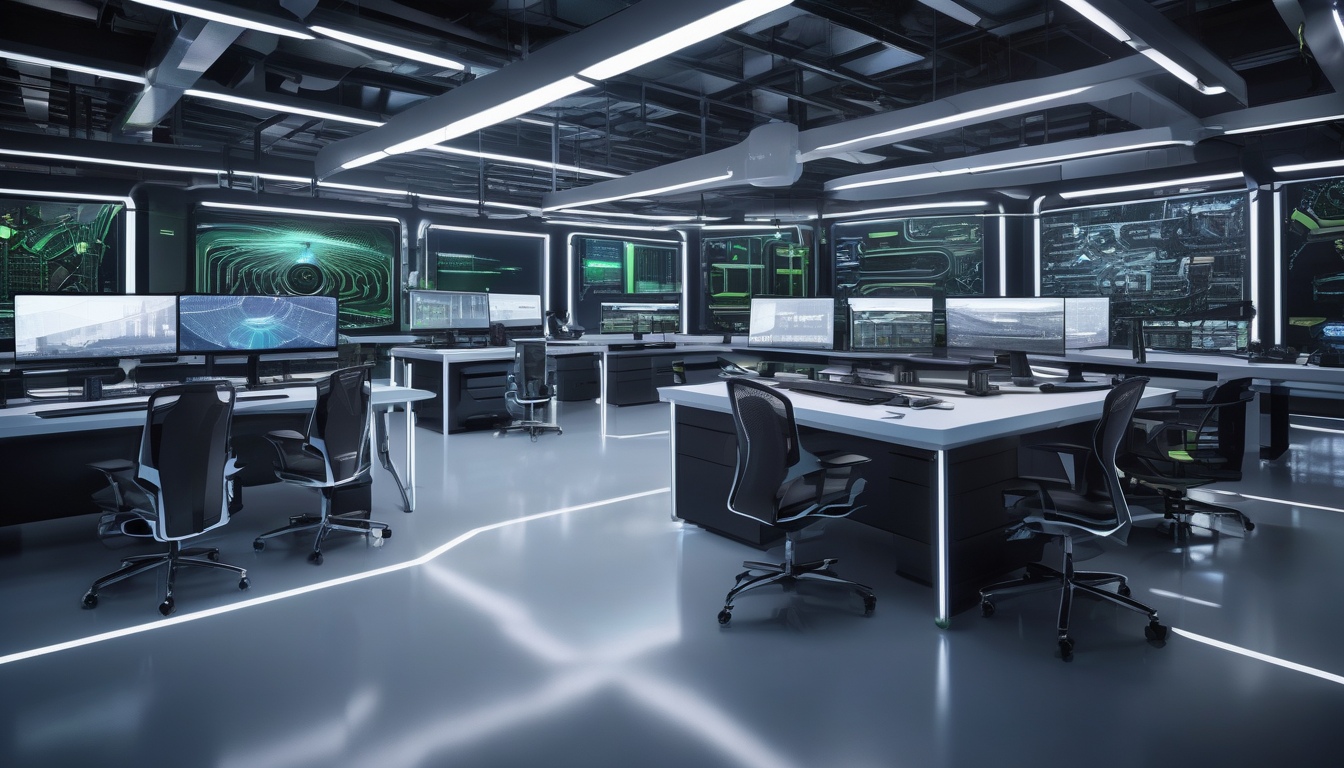
NVIDIA’s Graphics Processing Revolution
NVIDIA has truly transformed the landscape of AI supercomputing with its groundbreaking graphics processing units (GPUs). These powerful chips are not just for rendering stunning graphics in video games anymore; they are the backbone of modern AI research. By harnessing the parallel processing capabilities of GPUs, NVIDIA has enabled researchers and developers to handle complex AI workloads with remarkable speed and efficiency.
One of the key advantages of NVIDIA’s technology is its ability to perform multiple calculations simultaneously. This is akin to having a team of workers tackling different parts of a project at the same time, rather than a single worker completing tasks one by one. As a result, tasks that once took days or even weeks can now be completed in a fraction of the time. The impact of this revolution is profound, as it allows for rapid prototyping and testing of AI models, accelerating the pace of innovation in the field.
Moreover, NVIDIA’s commitment to developing specialized hardware for AI has led to the creation of platforms like NVIDIA DGX systems. These systems are designed specifically for deep learning and are equipped with the latest GPUs, optimized for AI tasks. The architecture of these systems allows for seamless integration with popular AI frameworks, making it easier for developers to build and deploy their applications.
| Feature | NVIDIA GPUs | Traditional CPUs |
|---|---|---|
| Processing Power | High parallel processing | Sequential processing |
| Efficiency | Optimized for AI workloads | General-purpose |
| Task Handling | Multiple tasks simultaneously | One task at a time |
As we look to the future, NVIDIA’s innovations are set to shape the next generation of AI supercomputers. With ongoing advancements in GPU architecture and software frameworks, the potential for AI applications is virtually limitless. From autonomous vehicles to advanced healthcare solutions, the revolution initiated by NVIDIA is just getting started, and the possibilities are exciting.
GPUs vs. Traditional CPUs
When it comes to the world of artificial intelligence and supercomputing, the debate between Graphics Processing Units (GPUs) and Central Processing Units (CPUs) is nothing short of a heavyweight championship match. Imagine a sprinter versus a marathon runner; both are athletes, but they excel in different arenas. Similarly, GPUs and CPUs have unique strengths that make them suitable for various tasks in the realm of AI.
CPUs, the traditional workhorses of computing, are designed to handle a wide range of tasks with high precision. They excel at executing complex algorithms and performing operations that require a lot of decision-making. However, when it comes to processing vast amounts of data simultaneously, CPUs can become bottlenecks. This is where GPUs shine. With their ability to perform parallel processing, GPUs can handle thousands of threads at once, making them the go-to choice for training deep learning models.
To further illustrate this point, consider the following comparison:
| Feature | CPUs | GPUs |
|---|---|---|
| Architecture | Few cores optimized for sequential processing | Thousands of cores for parallel processing |
| Performance | Ideal for general-purpose tasks | Exceptional for data-heavy tasks like AI training |
| Power Consumption | Higher for complex tasks | More efficient for parallel tasks |
This table highlights how GPUs are specifically engineered for the demands of AI workloads, making them indispensable in modern supercomputing environments. As AI models grow increasingly complex, the need for efficient data processing becomes paramount. In this context, GPUs not only outperform CPUs but also drive innovations in AI technology.
In conclusion, while CPUs will always have their place in computing, the rise of AI supercomputing has undeniably placed GPUs in the spotlight. They are not just a trend; they are the future of how we process information at lightning speed. So, as we look forward to the next wave of AI advancements, it’s clear that the battle between GPUs and CPUs will continue to shape the landscape of technology.
Future Trends in AI Supercomputing
As we look ahead, the landscape of AI supercomputing is set to undergo revolutionary changes that could redefine the boundaries of technology. One of the most exciting trends is the integration of quantum computing with traditional supercomputing architectures. Imagine a world where quantum bits (qubits) can perform calculations at lightning speeds, enabling AI systems to analyze vast datasets in mere seconds. This shift could lead to breakthroughs in fields ranging from medicine to climate science.
Another trend to watch is the rise of edge computing. As devices become smarter and more interconnected, processing data closer to the source will reduce latency and bandwidth issues. This means that AI supercomputers will not only reside in centralized locations but also at the edge of networks, providing real-time insights and decision-making capabilities. For instance, self-driving cars could leverage edge AI to make split-second decisions based on real-time data without relying on distant servers.
Moreover, the battle for energy efficiency is heating up. With the growing demand for computational power, companies are racing to develop green supercomputing technologies. This involves using renewable energy sources and designing systems that consume less power while maintaining performance. Consider the analogy of a car: just as electric vehicles are designed to be more efficient, AI supercomputers are evolving to be more sustainable. This trend not only addresses environmental concerns but also reduces operational costs.
Furthermore, we can expect a surge in collaborative AI. As organizations recognize the value of sharing knowledge and resources, partnerships between tech giants, startups, and academic institutions will become more common. This collaborative approach will accelerate innovation and lead to the development of more advanced AI algorithms and models. For example, a recent partnership between leading universities and tech companies has already begun yielding impressive results in AI research.
In conclusion, the future of AI supercomputing is bright and full of potential. From quantum advancements to energy-efficient designs, the next decade promises to be a thrilling ride for both tech enthusiasts and industry professionals. As we embrace these trends, the possibilities for AI applications will be limited only by our imagination.
Frequently Asked Questions
- What is an AI supercomputer?
An AI supercomputer is a powerful computing system specifically designed to handle complex calculations and data processing at lightning speeds. Think of it as a high-performance brain capable of analyzing vast amounts of information, which is essential for advancing artificial intelligence research.
- Who are the main competitors in the AI supercomputing race?
Major tech companies like Google, Microsoft, and NVIDIA are leading the charge in AI supercomputing. Each of these giants has its own unique strategies and innovations, making the competition intense and exciting as they strive for dominance in this rapidly evolving field.
- How does Google leverage quantum computing for AI?
Google is pioneering the integration of quantum computing into AI, which could significantly enhance processing power and efficiency. By harnessing the principles of quantum mechanics, they aim to solve complex problems that traditional computers struggle with, pushing the boundaries of what’s possible in AI.
- What role do GPUs play in AI supercomputing?
Graphics Processing Units (GPUs) are crucial for AI supercomputing due to their ability to perform parallel processing. Unlike traditional CPUs, GPUs can handle many tasks simultaneously, making them ideal for the heavy workloads associated with AI algorithms and deep learning.
- What future trends can we expect in AI supercomputing?
The future of AI supercomputing looks promising, with trends such as increased collaboration between tech companies and research institutions, advancements in hardware and algorithms, and the growing importance of ethical AI. These developments are likely to shape the next generation of AI capabilities.

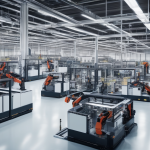

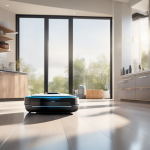










The AI regulation and compliance section is spot on. With the rise of AI adoption, ethical considerations will be crucial.…